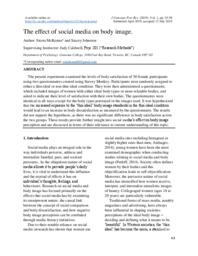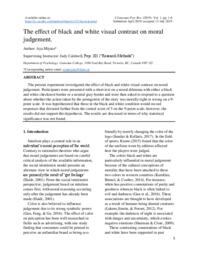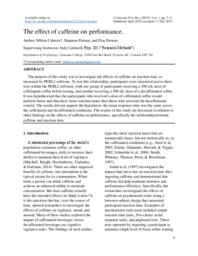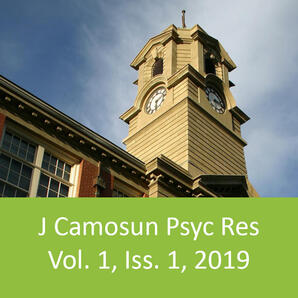article
Related Works
Content type
Digital Document
Description / Synopsis
The present experiment examined the levels of body satisfaction of 30 female participants using two questionnaires created using Survey Monkey. Participants were randomly assigned to either a thin ideal or non-thin ideal condition. They were then administered a questionnaire, which included images of women with either ideal body types or more relatable bodies, and asked to indicate their level of satisfaction with their own bodies. The questionnaires were identical in all ways except for the body types portrayed in the images used. It was hypothesized that the increased exposure to the ‘thin ideal’ body image standards in the thin ideal condition would lead to an increase in body dissatisfaction as measured by the questionnaire. The results did not support the hypothesis, as there was no significant difference in body satisfaction across the two groups. These results provide further insight into social media’s effect on body image perception and are discussed in terms of their relevance to current understanding of this topic.
Origin Information
Content type
Digital Document
Description / Synopsis
The present experiment investigated the effect of black and white visual contrast on moral judgement. Participants were presented with a short text on a moral dilemma with either a black and white checkered border or a neutral gray border and were then asked to respond to a question about whether the action taken by the protagonist of the story was morally right or wrong on a 9-point scale. It was hypothesized that those in the black and white condition would record responses that deviated farther from the central score of 5 on the 9-point scale; however, the results did not support this hypothesis. The results are discussed in terms of why statistical significance was not found.
Origin Information
Content type
Digital Document
Description / Synopsis
The purpose of this study was to investigate the effects of caffeine on reaction time, as measured by PEBL2 software. To test this relationship, participants were measured across three tests within the PEBL2 software, with one group of participants receiving a 300 mL dose of caffeinated coffee before testing, and another receiving a 300 mL dose of a decaffeinated coffee. It was hypothesized that the participants who received a dose of caffeinated coffee would perform better and thus have faster reaction times than those who received the decaffeinated control. The results did not support the hypothesis: the mean response time was the same across the caffeinated and decaffeinated conditions. The results of this study are discussed in relation to other findings on the effects of caffeine on performance, specifically the relationship between caffeine and reaction time.
Origin Information
Content type
Collection
Description / Synopsis
Journal of Camosun Psychology Research Volume 1, Issue 1, September 1, 2019 ISSN 2562-5624 Managing Editor: Michael Pollock Camosun College, Victoria, BC, lək̓ʷəŋən Territory
Origin Information
Content type
Collection
Description / Synopsis
ABOUT The Journal of Camosun Psychology Research is a biannual, online student publication produced with the support of the Department of Psychology at Camosun College. All articles are instructor-reviewed and edited. ISSN 2562-5624. RIGHTS INFORMATION Works featured in this journal are CC BY-NC 4.0 (https://creativecommons.org/licenses/by-nc/4.0/). Authors retain all rights to original work. CONTACT Michael Pollock, Faculty Editor pollockm@camosun.ca Camosun College Lansdowne School of Arts & Science 3100 Foul Bay Road Victoria, BC V8P 5J2 lək̓ʷəŋən Territory
Origin Information




